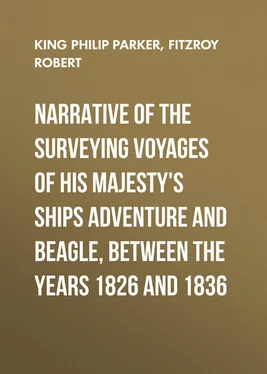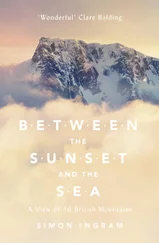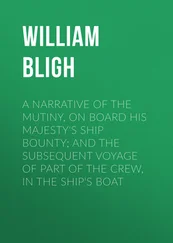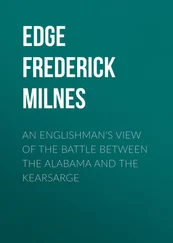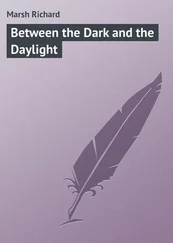Robert Fitzroy - Narrative of the surveying voyages of His Majesty's ships Adventure and Beagle, between the years 1826 and 1836
Здесь есть возможность читать онлайн «Robert Fitzroy - Narrative of the surveying voyages of His Majesty's ships Adventure and Beagle, between the years 1826 and 1836» — ознакомительный отрывок электронной книги совершенно бесплатно, а после прочтения отрывка купить полную версию. В некоторых случаях можно слушать аудио, скачать через торрент в формате fb2 и присутствует краткое содержание. Издательство: Иностранный паблик, Жанр: foreign_antique, foreign_prose, на английском языке. Описание произведения, (предисловие) а так же отзывы посетителей доступны на портале библиотеки ЛибКат.
- Название:Narrative of the surveying voyages of His Majesty's ships Adventure and Beagle, between the years 1826 and 1836
- Автор:
- Издательство:Иностранный паблик
- Жанр:
- Год:неизвестен
- ISBN:нет данных
- Рейтинг книги:3 / 5. Голосов: 1
-
Избранное:Добавить в избранное
- Отзывы:
-
Ваша оценка:
- 60
- 1
- 2
- 3
- 4
- 5
Narrative of the surveying voyages of His Majesty's ships Adventure and Beagle, between the years 1826 and 1836: краткое содержание, описание и аннотация
Предлагаем к чтению аннотацию, описание, краткое содержание или предисловие (зависит от того, что написал сам автор книги «Narrative of the surveying voyages of His Majesty's ships Adventure and Beagle, between the years 1826 and 1836»). Если вы не нашли необходимую информацию о книге — напишите в комментариях, мы постараемся отыскать её.
Narrative of the surveying voyages of His Majesty's ships Adventure and Beagle, between the years 1826 and 1836 — читать онлайн ознакомительный отрывок
Ниже представлен текст книги, разбитый по страницам. Система сохранения места последней прочитанной страницы, позволяет с удобством читать онлайн бесплатно книгу «Narrative of the surveying voyages of His Majesty's ships Adventure and Beagle, between the years 1826 and 1836», без необходимости каждый раз заново искать на чём Вы остановились. Поставьте закладку, и сможете в любой момент перейти на страницу, на которой закончили чтение.
Интервал:
Закладка:
When day broke (29th) it was discovered that the ship had drifted considerably during the night. The anchor was weighed, and with a favourable tide we reached an anchorage a mile in advance of the Beagle. We had shoaled rather suddenly to eight fathoms, upon which the anchor was immediately dropped, and on veering cable the depth was eleven fathoms. We had anchored on the edge of a bank, which soon afterwards, by the tide falling, was left dry within one hundred yards of the ship. Finding ourselves so near a shoal, preparations were made to prevent the ship from touching it. An anchor was dropped under foot, and others were got ready to lay out, for the depth alongside had decreased from eleven to seven fathoms, and was still falling. Fortunately we had brought up to leeward of the bank, and suffered no inconvenience; the flood made, and as soon as possible the ship was shifted to another position, about half a mile to the S.E., in a situation very favourable for our next attempt to pass the Narrow. This night the tide fell thirty-six feet, and the stream ran six knots.
The ensuing morning we made another attempt to get through the Narrow, and, from having anchored so close to its entrance, by which the full benefit of the strength, as well as the whole duration of the tide was obtained, we succeeded in clearing it in two hours, although the distance was more than twenty miles, and the wind directly against us, the sea, as before, breaking repeatedly over the ship.
After emerging from the Narrow we had to pass through a heavy 'race' before we 'reached' out of the influence of the stream that runs between the First and Second Narrow, but the tide lasted long enough to carry us to a quiet anchorage. In the evening we weighed again, and reached Gregory Bay, where the Beagle joined us the next morning.
Since entering the Strait, we had not had any communication with the Beagle on account of the weather, and the strength of the tide; this opportunity was therefore taken to supply her with water, of which she had only enough left for two days.
The greater part of this day was spent on shore, examining the country and making observations. Large smokes 15 15 Columns of smoke rising from large fires.
were noticed to the westward. The shore was strewed with traces of men and horses, and other animals. Foxes and ostriches were seen; and bones of guanacoes were lying about the ground.
The country in the vicinity of this anchorage seemed open, low, and covered with good pasturage. It extends five or six miles, with a gradual ascent, to the base of a range of flat-topped land, whose summit is about fifteen hundred feet above the level of the sea. Not a tree was seen; a few bushes 16 16 Berberis.
alone interrupted the uniformity of the view. The grass appeared to have been cropped by horses or guanacoes, and was much interspersed with cranberry plants, bearing a ripe and juicy, though very insipid fruit.
Next day the wind was too strong and adverse to permit us to proceed. In the early part of the morning an American sealing vessel, returning from the Madre de Dios Archipelago on her way to the Falkland Islands, anchored near us. Mr. Cutler, her master, came on board the Adventure, passed the day and night with us, and gave me much useful information respecting the nature of the navigation, and anchorages in the Strait. He told me there was an Englishman in his vessel who was a pilot for the strait, and willing to join the ship. I gladly accepted the offer of his services.
In the evening an Indian was observed on horseback riding to and fro upon the beach, but the weather prevented my sending a boat until the next morning, when Lieutenant Cooke went on shore to communicate with him and other Indians who appeared, soon after dawn, upon the beach. On landing, he was received by them without the least distrust. They were eight or ten in number, consisting of an old man and his wife, three young men, and the rest children, all mounted on good horses. The woman, who appeared to be about fifty years of age, was seated astride upon a pile of skins, hung round with joints of fresh guanaco meat and dried horse-flesh. They were all wrapped in mantles, made chiefly of the skins of guanacoes, sewed together with the sinews of the same animal. These mantles were large enough to cover the whole body. Some were made of skins of the 'zorillo,' or skunk, an animal like a pole-cat, but ten times more offensive; and others, of skins of the puma.
The tallest of the Indians, excepting the old man, who did not dismount, was rather less than six feet in height. All were robust in appearance, and with respect to the head, length of body, and breadth of shoulders, of gigantic size; therefore, when on horseback, or seated in a boat, they appeared to be tall, as well as large men. In proportion to the parts above-mentioned, their extremities were very small and short, so that when standing they seemed but of a moderate size, and their want of proportion was concealed by the mantle, which enveloped the body entirely, the head and feet being the only parts exposed.
When Mr. Cooke landed, he presented some medals 17 17 Previous to the expedition quitting England, I had provided myself with medals, to give away to the Indians with whom we might communicate, bearing on one side the figure of Britannia, and on the reverse George IV. "Adventure and Beagle," and "1826."
to the oldest man, and the woman; and suspended them round their necks. A friendly feeling being established, the natives dismounted, and even permitted our men to ride their horses, without evincing the least displeasure, at the free advantage taken of their good-nature. Mr. Cooke rode to the heights, whence he had a distinct view of the Second Narrow, and Elizabeth Island, whither, he explained to the Indians who accompanied him, we were going.
Mr. Cooke returned to the ship with three natives, whom he had induced to go with us to Elizabeth Island; the others were to meet them, and provide us with guanaco meat, to which arrangement the elders of the family had, after much persuasion, assented. At first they objected to their companions embarking with us, unless we left hostages for their safety; but as this was refused, they did not press the point, and the three young men embarked. They went on board singing; in high glee.
While the ship was getting under way, I went ashore to a larger number of Indians who were waiting on the beach. When my boat landed they were mounted, and collected in one place. I was surprised to hear the woman accost me in Spanish, of which, however, she knew but a few words. Having presented medals to each of the party, they dismounted (excepting the elders), and in a few minutes became quite familiar. By this time Captain Stokes had landed, with several of his officers, who increased our party to nearly double the number of theirs: notwithstanding which they evinced neither fear nor uneasiness. The woman, whose name was Maria, wished to be very communicative; she told me that the man was her husband, and that she had five children. One of the young men, whom we afterwards found to be a son of Maria, who was a principal person of the tribe, was mounted upon a very fine horse, well groomed, and equipped with a bridle and saddle that would have done credit to a respectable horseman of Buenos Ayres or Monte Video. The young man wore heavy brass spurs, like those of the Guachos of Buenos Ayres. The juvenile and feminine appearance of this youth made us think he was Maria's daughter, nor was it until a subsequent visit that our mistake was discovered. The absence of whiskers and beard gives all the younger men a very effeminate look, and many cannot be distinguished, in appearance, from the women, but by the mode in which they wrap their mantles around them, and by their hair, which is turned up and confined by a fillet of worsted yarn. The women cross their mantle over the breast like a shawl, and fasten it together with two iron pins or skewers, round which are twisted strings of beads and other ornaments. They also wear their hair divided, and gathered into long tresses or tails, which hang one before each ear; and those who have short hair, wear false tails made of horse-hair. Under their mantle the women wear a sort of petticoat, and the men a triangular piece of hide instead of breeches. Both sexes sit astride, but the women upon a heap of skins and mantles, when riding. The saddles and stirrups used by the men are similar to those of Buenos Ayres. The bits, also, are generally of steel; but those who cannot procure steel bits have a sort of snaffle, of wood, which must, of course, be frequently renewed. Both sexes wear boots, made of the skins of horses' hind legs, of which the parts about the hock joints serve for the heels. For spurs, they use pieces of wood, pointed with iron, projecting backwards two or three inches on each side of the heel, connected behind by a broad strap of hide, and fastened under the foot and over the instep by another strap.
Читать дальшеИнтервал:
Закладка:
Похожие книги на «Narrative of the surveying voyages of His Majesty's ships Adventure and Beagle, between the years 1826 and 1836»
Представляем Вашему вниманию похожие книги на «Narrative of the surveying voyages of His Majesty's ships Adventure and Beagle, between the years 1826 and 1836» списком для выбора. Мы отобрали схожую по названию и смыслу литературу в надежде предоставить читателям больше вариантов отыскать новые, интересные, ещё непрочитанные произведения.
Обсуждение, отзывы о книге «Narrative of the surveying voyages of His Majesty's ships Adventure and Beagle, between the years 1826 and 1836» и просто собственные мнения читателей. Оставьте ваши комментарии, напишите, что Вы думаете о произведении, его смысле или главных героях. Укажите что конкретно понравилось, а что нет, и почему Вы так считаете.
